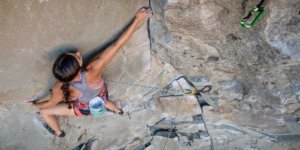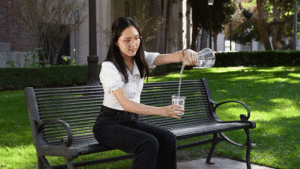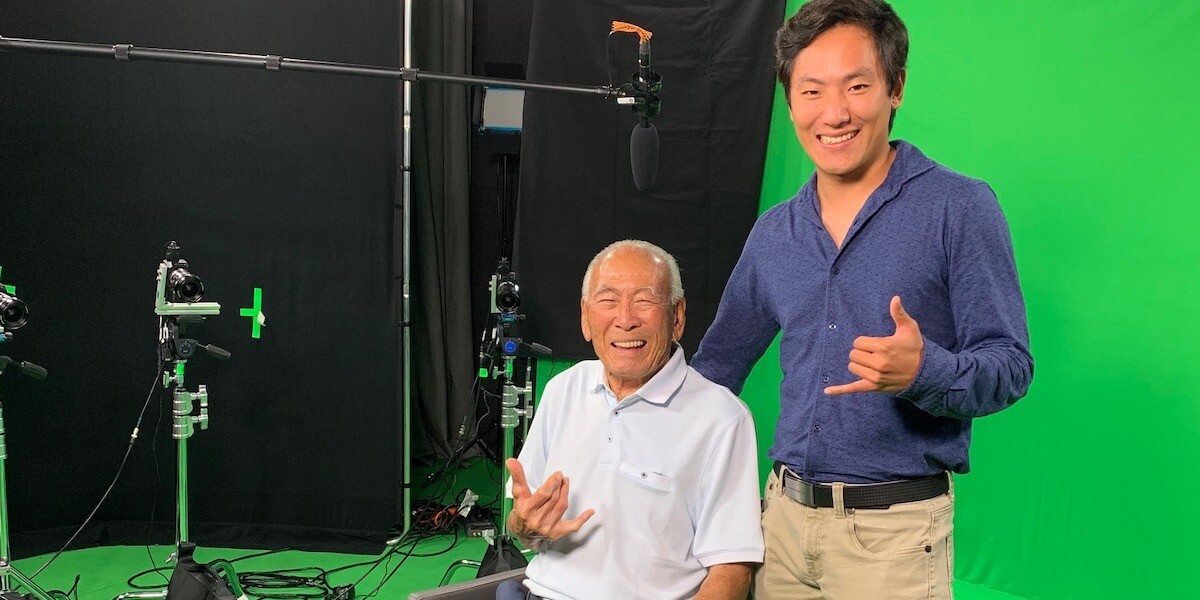
Cole and Lawson Sakai. Lawson is a WWII veteran and the subject of Japanese American Stories first AI interview. The interview will be on display at the Japanese American National Museum soon. PHOTO/ELLEN KAWANA.
In sixth grade, USC Viterbi senior Cole Kawana interviewed his great-uncle for a school project. The topic: surviving the atomic bombing of Hiroshima.
He stepped on a rusty nail the day before the bombing. That small misfortune saved his life.
This interview was archived in the Hiroshima Peace Memorial Museum in Japan. The lessons from his great-uncle — and three of his grandparents and great grandparents, all of whom were in internment camps in World War II — however, remain indelibly a part of Kawana’s legacy.
One of these lessons: paying it forward.
“When my family was in the camp,” said Kawana, “one of their neighbors agreed to hold their produce trucks for them. They lost all of their possessions not sold, but being able to come back to these trucks really helped them get off the ground when they returned,”
Growing up in Malibu, Kawana, a mechanical engineering student, always felt fortunate and aware that he owed much of this to those who came before him. As a young student, he balanced his interest in the arts with his passion for engineering. While the interview with his great-uncle kicked off an interest in documentary filmmaking, an early attempt at devising a pulley system — with a rope wrapped around his bedframe at age 4 — marked a lifelong interest in tinkering.
“I was always mechanically minded,” Kawana said. His interest in artificial intelligence and documentary filmmaking led him to USC, first through work with Steven D. Smith, Finci-Viterbi Endowed Executive Director of the USC Shoah Foundation.
As an intern, Kawana worked with Smith on New Dimensions in Testimony, which features 360 degree film run through an AI program, producing a hologram that visitors can interact with. Though it might’ve been natural to be a film major, however, Kawana said he was always more interested in the technical aspects of storytelling: the mechanics and technologies of putting together an experience, beyond a static narrative.
During Kawana’s freshman year at USC, he met a pivotal group of friends at Birnkrant Residence Hall. Through this group, he went from being more of a “stay-at-home” kid to a lover of the outdoors. He joined the climbing team and ski team with friends from freshman year, thriving on the mental challenge of addressing the elements. One of his favorite activities: multi-pitch climbing, where instead of climbing up with a rope and then climbing back down, you climb up, set up an anchor system and keep ascending. Along with friends from Viterbi, he completed a 13 pitch,1500 foot climbing challenge in Mazama, Washington.
“It’s totally engineering, conserving energy and resources, managing all the rope systems, making pulleys and tying knots. Every step requires cost benefit analysis,” Kawana said. “Climbing is very methodical and very cerebral. I’m not drawn to the under 20-foot acrobatics activities, but instead to the multi-pitch, technical climbs, where you have to engineer your way up and down.”
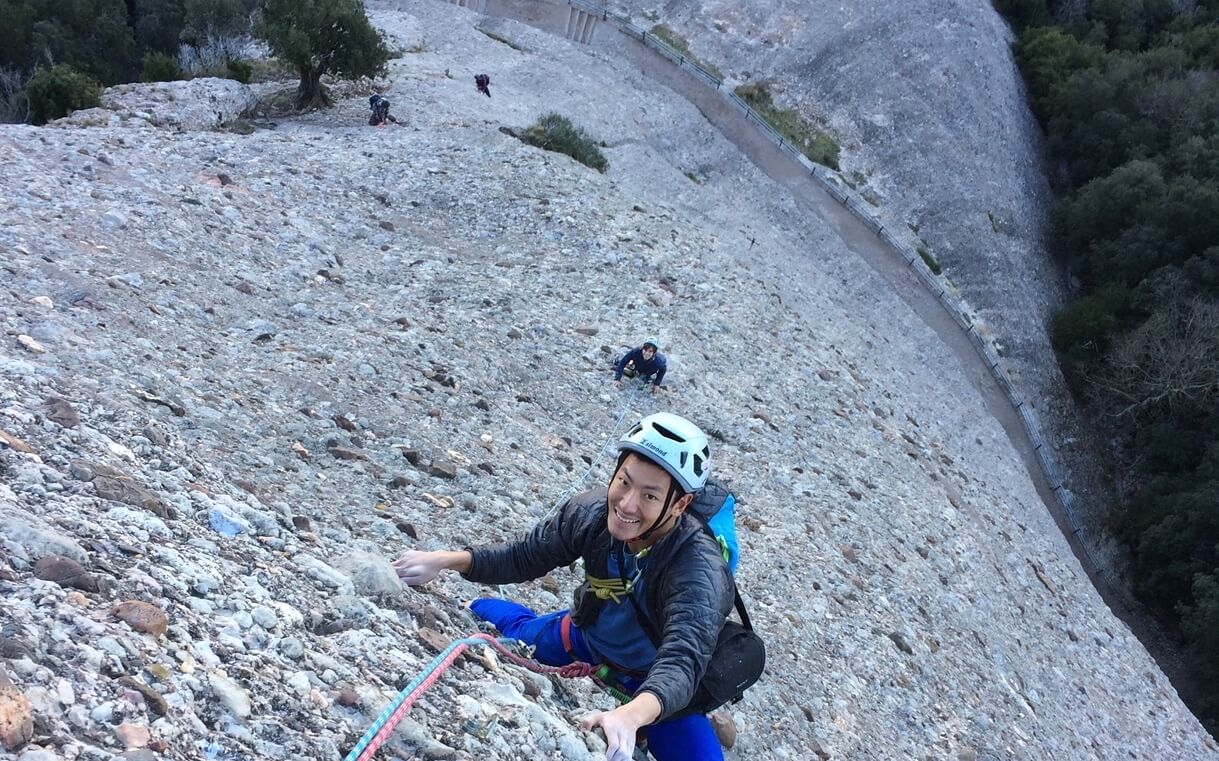
Cole and USC friend rock climbing. PHOTO/COLE KAWANA.
Given Kawana’s love of surfing, a pastime shared by his father, he soon became interested in in hydrofoils — a lifting surface that operates on water — the subject of his AME 441 project. He plans to work with Alejandra Uranga, WiSE Gabilan Assistant Professor in Aerospace and Mechanical Engineering, to further perfect the design of the hydrofoil cross-sections to decrease drag and increase speed and efficiency. To create the parts, Kawana uses a 3-D printer and hopes to eventually test his prototypes in the Dryden Wind Tunnel, when it reopens.
At the center of Kawana’s mission remains the desire to impact the communities around him. In high school, he created a non-profit called Clean Water Ambassadors after a documentary filmmaking trip to Rwanda, where he planned to gather testimonies on the 1994 genocide. He brought along water filters in his suitcase, which he donated to a women’s shelter. Upon his return, he started the organization, which has donated water filters to over 200,000 people in 25 countries to date. It’s run largely through volunteer transport and local partnerships, and is funded by a secondary company, which creates water bottles bearing the company logo for sale.
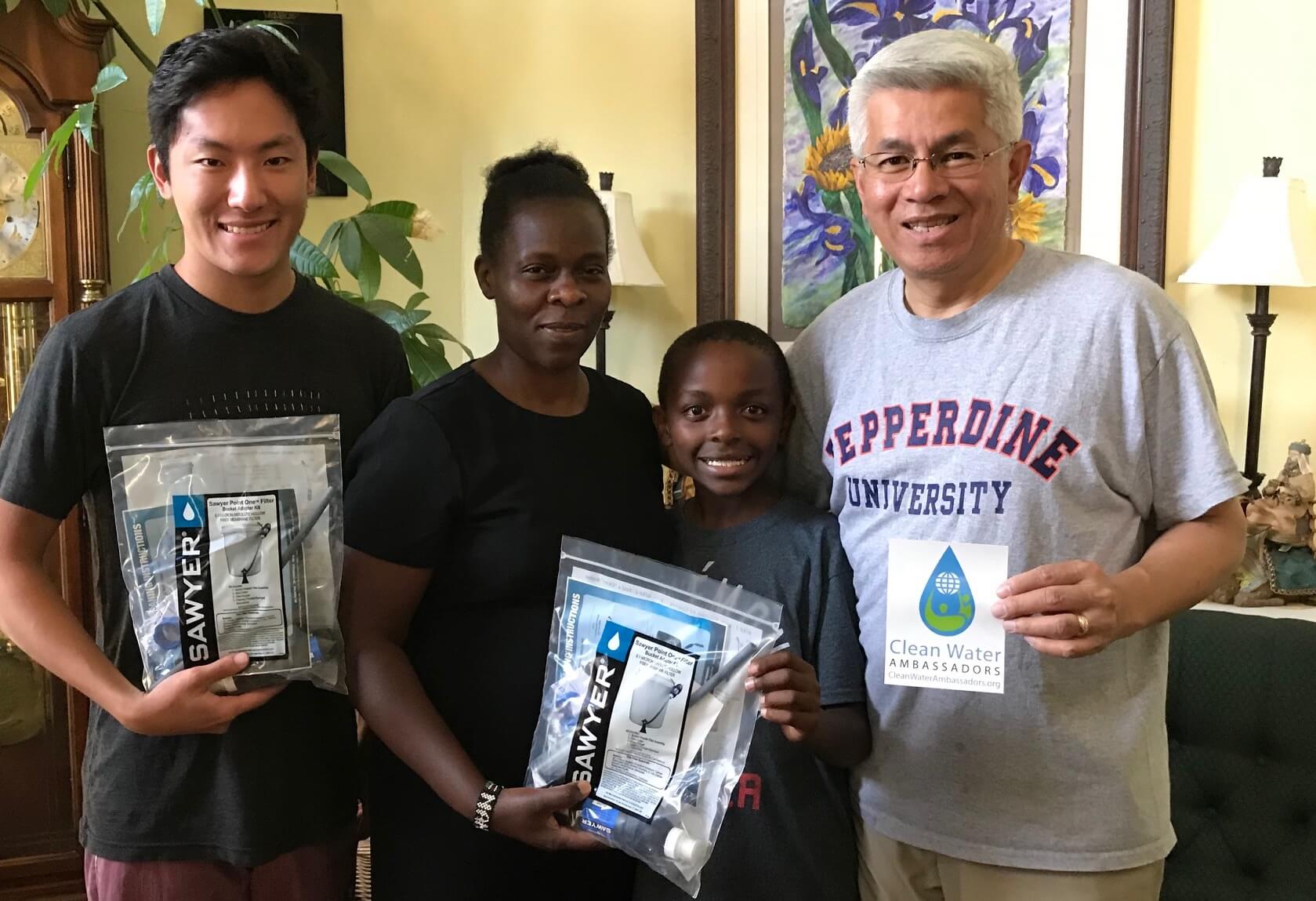
Cole, Victors mom Nancy, Victor, and Hung Le. Victor came to the US to receive a life saving surgery, but upon returning home found he was getting kidney infections from dirty water. Clean Water Ambassadors donated filters through Hung and saved his life. In a full circle moment Victor has since become an ambassador. PHOTO/COLE KAWANA.
The project most on Kawana’s mind now was inspired by the Shoah Foundation’s Holocaust testimony project and by his grandparents.
“I want to make sure we gather firsthand stories now,” Kawana said, “from those who were young adults and adults living through unparalleled challenges. These stories won’t be available forever, as the more time goes by, the more of them we lose.”
Linking what the Shoah Foundation has been able to do with his desire to share more stories like those from his family, Kawana launched another non-profit called Japanese American Stories, when he filmed the first of what he hopes will be five documentary segments featuring original testimony documenting the Japanese American experience during World War II. The testimony will be integrated at the Japanese American National Museum in Los Angeles, where his family has spent much of their time giving back.
“People like my grandparents volunteered there as docents and were able to say, as they led tours, ‘When I was a kid your age, this happened to me.’ I hope that my films can be integrated into the museum through an AI docent experience, where visitors are led through the entire space with someone who has lived the experience and can answer questions about it authentically.”
Kawana hopes to raise a million dollars to fund the project and plans to dedicate most of his time post-graduation to ensuring the histories of the past are preserved, as are our connections to them.
As for his last few weeks at USC? While Kawana is sad to miss in person commencement activities, he says that his friendships and spontaneous experiences define his time spent at USC Viterbi. Looking back, he recalls the first day of sophomore year, when he convinced that same group from Birnkrant Residence Hall to drive 14 hours to Idaho to watch a three-minute eclipse.
“Seeing that with all my friends was insane. The temperature dropped 10 degrees and there was a 360 degree sunset. We saw Mercury and Venus. We saw animal behavior completely change. Then we got back in our van and drove 14 hours back, just in time for the second day of classes.”
Another story for the ages.
Published on May 11th, 2020
Last updated on May 12th, 2020




